Transit Of Venus
Try bringing two of your fingers closer in the back drop of a light source and you would observe this:
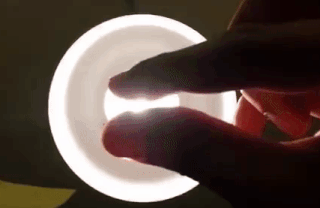
Long before your fingers actually touch, the edges magically seem to touch each other. How is this even possible?
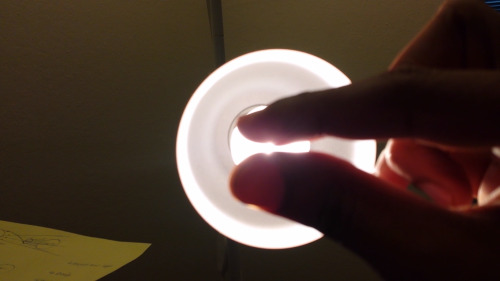
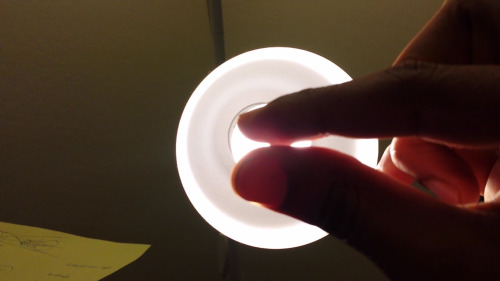
Transit of Venus
When scientists were observing the transit of Venus from Earth i.e when the planet Venus passes directly between the Sun and Earth,they faced a similar problem.
At the moment when Venus should nearly touch the edge of the sun, the circular planet began to elongate.
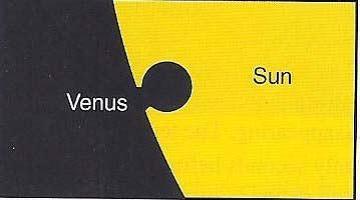
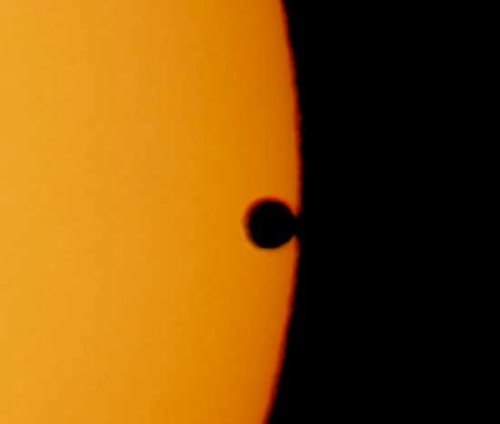
PC: NASA
And they noticed the same phenomenon for Mercury as well (which has no atmosphere).
What is causing this optical phenomenon?
The physics behind this beautifully bizarre optical phenomenon will be revealed tomorrow on FYP!.
But since this is something that you can all try at home, we strongly encourage you to play around with this and get a feel for it. It requires only your hands and a source of light.
Once you do, try to hypothesize a solution for this behavior.
Have fun!
More Posts from Venusearthpassage and Others

A view of the Apollo 11 lunar module “Eagle” as it returned from the surface of the Moon to dock with the command module “Columbia”. A smooth mare area is visible on the Moon below and a half-illuminated Earth hangs over the horizon. The lunar module ascent stage was about 4 meters across. Command module pilot Michael Collins took this picture just before docking at 21:34:00 UT (5:34 p.m. EDT) 21 July 1969. (Apollo 11, AS11-44-6642)
Credit: Apollo 11, NASA










Why Isn’t Our Universe Perfectly Smooth?
“This seems, at first glance, to pose a tremendous problem. If inflation stretches space to be flat, uniform, and smooth, indistinguishably so from perfection, then how did we arrive at a clumpy Universe today? Both Newton’s and Einstein’s theories of gravity are unstable against imperfections, meaning that if you start with an almost-but-not-quite perfectly smooth Universe, over time, the imperfections will grow and you’ll wind up with structure. But if you start with perfect smoothness, with literally no imperfections, you’re going to remain smooth forever. Yet this doesn’t jibe with the Universe we observe at all; it had to have been born with imperfections in its matter density.”
One of the great successes of cosmic inflation is to set up the initial conditions for the Big Bang that we knew we needed, including giving us a Universe that had the same temperature and density everywhere. But this couldn’t have been a perfect smoothness, otherwise we’d never have formed stars, galaxies, and the cosmic large-scale structure we observe today in the space we inhabit. So how did we come to be clumpy? The Universe must have been born with initial imperfections in them. If you treat inflation as a classical field, you’ll never get them that way, but if you recognize that it’s a quantum field, with the associated quantum fluctuations that we know must be there, the whole story changes. Not only does inflation give you these cosmic imperfections, but it gives you the full spectrum of them that you can then go check against observations.
These predictions were made in the early 1980s, and were verified decades later by COBE, WMAP, and Planck. It’s a huge victory for a great scientific theory!

Craters on Venus.
Shared from Sky News: Venus has more volcanoes than we thought - and this map shows where they are

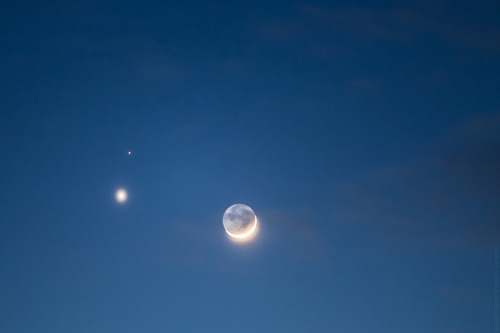
Moon - Venus - Mars
by Neil A.D. Taylor

Every Moon Landing of the 50s and 60s by designer Margot Trudell
via
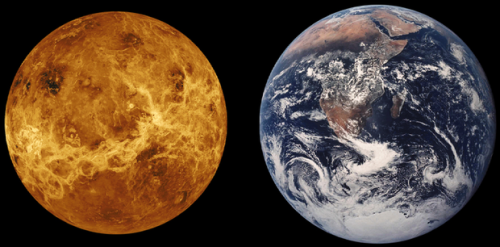
The Surprisingly Strong Case For Colonizing Venus:
Why worry about building a colony on Mars when instead you could float one high above the surface of Venus? Science fiction writer Charles Stross recently revived the idea of building a Venutian colony when he suggested, cheekily, that billionaires ought to be compelled to donate to massive humanity-improving projects. He suggested two: a Manhattan Project-like focus on developing commercial nuclear fusion, or the construction of a floating city on Venus.
The second planet from the Sun might seem like a nasty place to build a home, with a surface temperature hot enough to melt lead and an atmosphere so dense it would feel like being submerged beneath 3000 feet of water. But the air on Venus thins out as you rise above the surface and cools considerably; about 30 miles up you hit the sweet spot for human habitation: Mediterranean temperatures and sea-level barometric pressure. If ever there were a place to build a floating city, this would be it.
Believe it or not, a floating city might be a feasible project. Scientist and science fiction author Geoffrey Landis presented a paper called “Colonizing Venus” [PDF] at the Conference on Human Space Exploration, Space Technology & Applications International Forum in Albuquerque, New Mexico back in 2003. Breathable air floats in Venus’s soupy carbon dioxide atmosphere, which means on Venus, a blimp could use air as its lifting gas, the way terrestrial blimps use helium to float in our much thinner atmosphere.
This figure shows the volcanic peak Idunn Mons in the Imdr Regio area of Venus. The topography derives from data obtained by NASA’s Magellan spacecraft, with a vertical exageration of 30 times. Radar data (in brown) from Magellan has been draped on top of the topographic data. Bright areas are rough or have steep slopes. Dark areas are smooth. (NASA/JPL/ESA)
A group of science fiction authors and scientists have been discussing the idea on the blog Selenian Boondocks, which founder Jonathan Goff describes as “a blog I founded to discuss space politics, policy, technology, business, and space settlement.” One of the biggest problems with a lunar or Martian colony is that an astronaut’s bones and muscles deteriorate in low gravity. No one knows yet how much gravity a human needs to prevent deterioration, but Venus’s gravity is the closest to Earth’s, at about 9/10ths. Mars only has a third of the gravity that the Earth does, while the moon has a mere sixth.
Atmospheric pressure is also crucial. Think of the difference between jabbing a car tire and letting air out of a half-inflated balloon. Gases seek equilibrium. Since there’s barely any atmosphere on the moon or Mars, a rip in the hull of an enclosed human habitat would suck oxygen out at tremendous force. Thirty miles above Venus, it would merely seep out. This also means a Venutian cloud colony wouldn’t need as much reinforcement. Venus has other boons, too. Its rich atmosphere blocks radioactivity and could be mined for useful materials. And with a gentle temperature, far less energy would have to be spent on heating or cooling the colony.
Of course, it’s hard enough landing on the surface of another planet, let alone at 30 miles above the surface, but Landis hypothesized a way to do it.
A hypothetical floating outpost 30 miles above the surface of Venus. (Wikimedia Commons/Anynobody)
A sphere with titanium skin 0.04” thick would be able to survive reentry and float a couple of miles above the surface, he argued. Goff, who who describes himself as a space entrepreneur and space settlement advocate, suggests that rocket stages (the parts that drop off of a spaceship during liftoff) could also be engineered to float after use and be re-used, providing a way to and from the colony so that building materials could be mined from the surface. The well-informed space enthusiasts who frequent the Selenian Boondocks also helped Goff map out the chemical processes required to extract breathable air (a mixture of nitrogen and oxygen), water and various fuel and construction materials.
After the chemical processes involved with producing life-supporting materials are demonstrated and perfected, the Selenian Boondocks team suggest small robotic labs could be sent to Venus, where they would bob in the atmosphere, extracting life-sustaining materials, gradually inflating great bladder-like structures (perhaps a Bigelow Aerospace module made of Kevlar). Years into the project, it might look like a gargantuan bunch of grapes. Permanent settlers could tether these floating blobs together, extending walkways and building platforms, creating something that might eventually look like a massive floating oil rig, complete with tubes dangling dozens of miles below to gather materials from the surface.
Goff plans to continue fleshing out the details on his site over the coming months (plans were temporarily put on hold after the birth of his youngest child). “I still need to talk about chemicals that seem easy to get to from the raw materials,” he says, “and how those impact colony design.”
As to what life perched high above Venus might really feel like, frequent Selenian Boondocks commentator George Turner imagines how a tough colonist might dangle meat into Venus’s ferocious, acidic atmosphere as a cooking source:
Well let me tell you, acid is good for meat, and breaks down connective tissue, fats, and tenderizes it. Run the pH the other way and it turns into soap and you might as well bite into a urinal cake.
Venus is not for the timid, or people too afraid to shove a fat bird out the airlock and let the harsh laws of thermodynamics do the work. Venus is for men. Men who like to eat meat – cooked in fire and acid and seasoned with the Devil’s own mix of volatiles boiled up from the pits of hell.
If the thought of Thanksgiving Dinner on Venus gives you the heebie jeebies, you don’t even need to think about plunging into the roiling atmosphere with nothing but a cheap plastic heat shield and a thin balloon to save you from the crematorium that yawns down below. So man up, dangle the bird into the depths of the Stygian hell, feast as someone who walks between worlds and lives on an airship that rides the hell born winds 30 miles above a surface so hot it glows visibly red.
Ultimately there will have to be a compelling reason to spend trillions of dollars to move off-world: a vital resource located on Venus, mass over-crowding, nuclear apocalypse. But if we do colonize the skies of Venus, it will be the soft factors like the plausibility of a Venutian acid-baked cuisine that will make us stay.

The 4 Terrestrial Planets
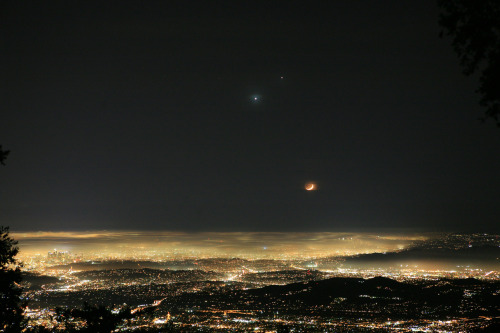
The sky seemed to smile over much of planet Earth. Visible the world over was an unusual superposition of our Moon and the planets Venus and Jupiter. A crescent Moon over Los Angeles appears to be a smile when paired with the planetary conjunction of seemingly nearby Jupiter and Venus.

This is an image of Venus taken in 1974 by NASA’s Mariner 10 space probe. The planet is blanketed by a thick veil of clouds high in carbon dioxide.
-
 rosebella2016 liked this · 3 years ago
rosebella2016 liked this · 3 years ago -
 wyrdandwanderful liked this · 3 years ago
wyrdandwanderful liked this · 3 years ago -
 ggkan liked this · 4 years ago
ggkan liked this · 4 years ago -
 guardingtreasure liked this · 4 years ago
guardingtreasure liked this · 4 years ago -
 opticaverslag-blog reblogged this · 5 years ago
opticaverslag-blog reblogged this · 5 years ago -
 icefanila-blog liked this · 5 years ago
icefanila-blog liked this · 5 years ago -
 bexhudson-blog reblogged this · 6 years ago
bexhudson-blog reblogged this · 6 years ago -
 spottenicht liked this · 6 years ago
spottenicht liked this · 6 years ago -
 chaiholmes reblogged this · 6 years ago
chaiholmes reblogged this · 6 years ago -
 septimusheaps liked this · 6 years ago
septimusheaps liked this · 6 years ago -
 lizdatasian liked this · 6 years ago
lizdatasian liked this · 6 years ago -
 beanbagworld reblogged this · 6 years ago
beanbagworld reblogged this · 6 years ago -
 cara-linea reblogged this · 6 years ago
cara-linea reblogged this · 6 years ago -
 na-zar liked this · 6 years ago
na-zar liked this · 6 years ago -
 elsisselene liked this · 6 years ago
elsisselene liked this · 6 years ago -
 sunnysaysbookreviews liked this · 6 years ago
sunnysaysbookreviews liked this · 6 years ago -
 rabbitindisguise reblogged this · 6 years ago
rabbitindisguise reblogged this · 6 years ago -
 j-jcarlo liked this · 6 years ago
j-jcarlo liked this · 6 years ago -
 lemonade-drinking-ghost liked this · 6 years ago
lemonade-drinking-ghost liked this · 6 years ago -
 puppetfuneral-blog liked this · 6 years ago
puppetfuneral-blog liked this · 6 years ago -
 ducksaint liked this · 6 years ago
ducksaint liked this · 6 years ago -
 nualie liked this · 6 years ago
nualie liked this · 6 years ago -
 dearkurisu liked this · 6 years ago
dearkurisu liked this · 6 years ago -
 megxolotl liked this · 6 years ago
megxolotl liked this · 6 years ago -
 mycoolstoryworld liked this · 6 years ago
mycoolstoryworld liked this · 6 years ago -
 iswearthisisrepetitive reblogged this · 6 years ago
iswearthisisrepetitive reblogged this · 6 years ago -
 dragonkinglover reblogged this · 6 years ago
dragonkinglover reblogged this · 6 years ago -
 dragonkinglover liked this · 6 years ago
dragonkinglover liked this · 6 years ago -
 elsisselene reblogged this · 6 years ago
elsisselene reblogged this · 6 years ago -
 neuronium reblogged this · 6 years ago
neuronium reblogged this · 6 years ago -
 inkeerie liked this · 6 years ago
inkeerie liked this · 6 years ago